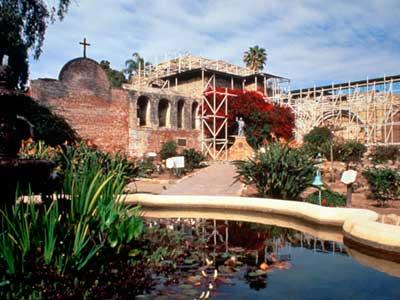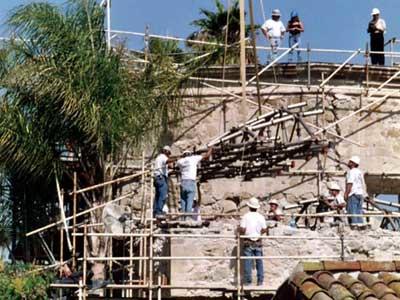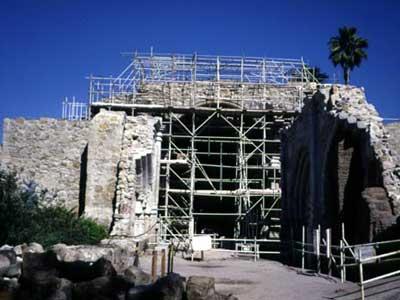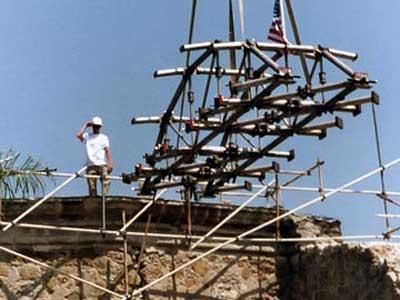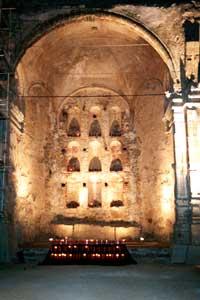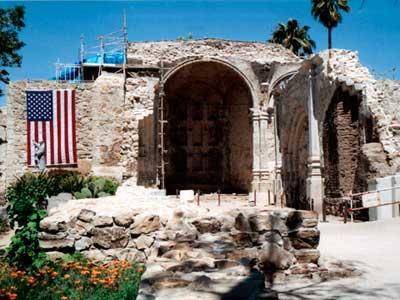San Juan Capistrano Mission
The expansive San Juan Capistrano Mission was initially a small adobe chapel when it was established by Padre Junípero Serra on November 1, 1776. It was the second of 21 Spanish missions founded along the coast of California in the 18th and 19th centuries. The congregation of San Juan Capistrano expanded rapidly over the next 20 years, and in 1797, master stonemason Isidoro Aguílar began the work of replacing the mission’s modest chapel with a colossal sandstone church designed to hold 1,300 people. The neoclassical church was laid out in the shape of a Latin cross with an 85 ft wide transept and 167 ft long nave; its roof was formed by eight shallow domes and topped by a 120-foot bell tower. Construction was completed by 1806, but on December 8, 1812, a violent earthquake caused the bell tower to collapse, killing 49 worshippers inside the church. That first catastrophic event began a tumultuous period in the history of the church. Only six years later, French pirates torched several of the mission’s peripheral structures. After the declaration of Mexican Independence in 1821, the government expelled the Spanish from California and seized the mission for secular purposes. After the land it was on became part of the United States, the mission was returned to the Catholic Church in 1865 by Abraham Lincoln in a presidential decree. Since then conservation efforts on the structure have been inadequate, leaving the monument in ruins.
2002 World Monuments Watch
San Juan Capistrano is plagued by frequent seismic activity that continually threatens to damage the remaining buildings of the mission. After the 1812 earthquake, repairs made in the 19th century did not fully protect the foundation of the Great Stone Church. In 1999, members of the local community established the Mission Preservation Foundation to raise money for the restoration of the church. World Monuments Fund placed San Juan Capistrano Mission on the Watch in 2002 and provided a grant to stabilize and conserve the vestry. Once an architectural survey was conducted and a master plan was drafted, the project progressed, resulting in the systematic restoration of the Great Stone Church. In addition to WMF, financial support was provided by the state government, various community organizations, and private donors.
This 18th century Spanish mission, now a state landmark, lies at the heart of the modern town of San Juan Capistrano in Orange County, still surrounded by a dedicated community that strongly advocates for its preservation. Of the 21 missions established along the Californian coast in the 18th and 19th centuries, San Juan Capistrano is the best-known, most-visited, and the only one built from stone. Its grounds hold numerous historic buildings, including the monumental Great Stone Church, the Campanario (Bell Wall), a Spanish soldiers’ barracks, and the Serra Chapel. Founded in 1776, the Serra Chapel is an adobe structure that housed the original parish at San Juan Capistrano and is the oldest surviving structure in California. Now open to the public as a museum, the mission attracts 550,000 annual visitors and hosts educational events, lectures, art programs, and concerts.

